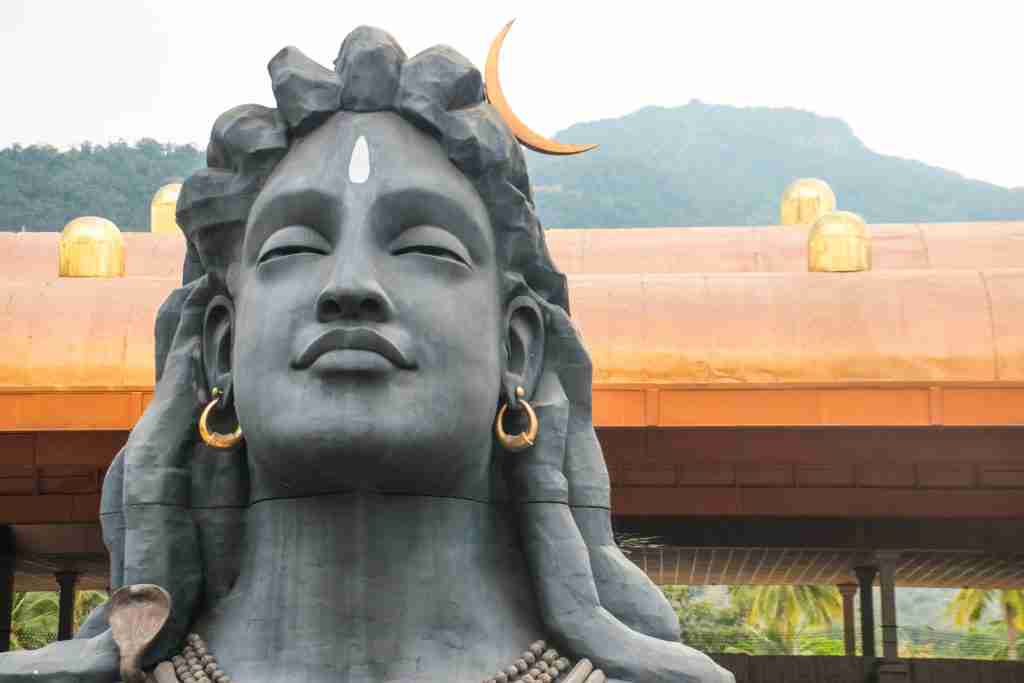Paramahansa Yogananda
by Ed and The OM Team | Autumn 2022, Print Articles, Spiritual Living, Thought Leaders
Walking with the Master, Paramahansa Yogananda
It is 70 years – almost to the day – since Paramahansa Yogananda departed this earthly plane, but the legacy of his teachings fuelled a spiritual revolution that continues to grow to this day,
How was it that an Indian Yogi, landing in the materialistic society that was typical of the United States in 1920, had such a lasting influence on the western way of life?
As Brother Brahmananda of the Self-Realization Fellowship in Los Angeles explained in a 2005 interview: “Paramahansa Yogananda said that Christ and Babaji, who is a great master still alive in the Himalayas, were in communion and that Christ felt badly about the churches in the west, that there wasn’t sufficient God communion there, people weren’t really getting inside and being in God’s presence… Now, what Paramahansaji has done is to take the deepest truths of Hinduism, shown that they exist also in Christianity, and created a path where both are present, in such a way that it’s far more assimilable to westerners than other paths might be.”
So how did all this come about?
Yogananda was born Mukunda Lal Ghosh in 1893 in Gorakhpur, in north-east India. He adopted the name Yogananda as his spiritual name when he was initiated as a monk of the Swami order and Paramahansa was later added as a term of respect.
His parents were disciples of the guru Lahiri Mahasaya, himself a disciple of Mahavatar Babaji. The guru died before Mukunda was born but continued to be the family’s guiding light. Mukunda found his own guru, Sri Yukteswar, when he was 17 years old but was encouraged by both the guru and his own father to complete his university education before devoting himself entirely to the spiritual life. Even so, it would seem, from his own words in his autobiography that his university degree owed more to divine intervention than to diligent study.
Yogananda’s destiny was known in advance to both Lahiri Mahasaya and Sri Yukteswar and the young man’s own burning desire to seclude himself in a cave in the Himalayas was doomed to failure. “Wisdom is better sought from a man of realisation than from an inert mountain,” Sri Yukteswar told him.
So Yogananda sought wisdom and a deep and personal relationship with God, through the practice of Kriya Yoga, which Babaji had resurrected from an almost forgotten past and taught to Mahasaya, who passed it on to Sri Yukteswar. It was this knowledge that Yogananda, in fulfilling his destiny, took with him to America. By concentrating on what brought people together, rather than on differences in their religions, Yogananda offered an eastern discipline in a form that appealed to western minds. “A Christian doesn’t give up his deep reverence and feeling for Christ,” said Brother Brahmananda. “There are many paths to God, but in order to find God, you have to choose the path that you feel is most attuned to you and go very, very deep in that path,” he added.
“The goal of Yoga science is to calm the mind, that without distortion it may hear the infallible counsel of the Inner Voice,” wrote Yogananda in his Autobiography of a Yogi. Basically, Kriya Yoga is an advanced technique of life energy control which amplifies subtle energy currents, enabling the normal activities of the heart and lungs to slow down naturally and focus to be concentrated inwards. This ‘inner awakening’ brings a higher level of perception and, with it, profound feelings of peace and joy.”
As Yogananda himself wrote: “Kriya Yoga is an instrument through which human evolution can be quickened. The ancient yogis discovered that the secret of cosmic consciousness is intimately linked with breath mastery. The life force, which is ordinarily absorbed in maintaining the heart-pump, must be freed for higher activities by a method of calming and stilling the ceaseless demands of the breath… Learn to be calm and you will always be happy.”
An essential for any pursuit of higher consciousness is a sense of inner peace. To be at peace with the world, one must first be at peace with oneself. “When the mind is calm, how quickly, how smoothly, how beautifully you will perceive everything,” preached Yogananda. Everything begins with a mind that is not only at peace but also filled with hope and joy. Much has been written about the ‘power of positive thinking’ and ‘mind over matter’ but here the concepts are taken to a higher level: Thoughts create an individual’s own reality. “Since you alone are responsible for your thoughts, only you can change them.”
He explains: “Never do anything that taints your mind. Wrong actions cause negative or evil mental vibrations that are reflected in your whole appearance and personality. Engage in those actions and thoughts that nurture the good qualities you want to have.” Yogananda taught that happiness was not dependent on material success. “By the practice of meditation, you will find that you are carrying within your heart a portable paradise.”
In the frenetic world of the 21st century, the notion of meditation, of finding the quiet within, is probably even more important than it was a century ago, when Yogananda was advocating it in America. “Before embarking on important undertakings, sit quietly, calm your senses and thoughts and meditate deeply. You will then be guided by the great creative power of Spirit.”
How many of us make time to do this? Particularly if the ‘important undertakings’ are require an urgent decision? How many of us promise ourselves we’ll meditate later, after the crisis is over? But time is not the enemy. “To meditate a short time with depth is better than to meditate for long hours with the mind running wild… Meditation is the effort to realise and express that pure consciousness which is the reflection, or image, of God within you.”
Divinity, he maintained, is within all of us and we can get to know God by looking within ourselves. The ultimate goal is unity with God. “Read a little. Meditate more. Think of God all the time.”
Since progress to a higher plane of consciousness depends on self-realisation, Yogananda takes pains to elucidate what he means by this. “Self-realisation is yoga or ‘oneness’ with truth — the direct perception or experience of truth by the all-knowing intuitive faculty of the soul,” and his definition of ‘truth’ is exact correspondence with reality. “The deeper the self-realisation of a man, the more he influences the whole universe by his subtle spiritual vibrations and the less he himself is affected by the phenomenal flux.”
To Yogananda, success was to be measured purely in spiritual terms. He preached: “Nothing is impossible unless you think it is,” but stressed the importance of patience and perseverance. “Perseverance is the whole magic of spiritual success,” and: “The season of failure is the best time for sowing the seeds of success.”
In the end it all depended on having first achieved inner peace. “Spiritual success lies in constantly attuning yourself with the Cosmic Mind and in maintaining your peace and poise no matter what irremediable events occur in your life, such as the death of dear ones, or other sorrowful happenings.”
Much of Yogananda’s influence on western thinking stemmed from the fact that he stripped Yoga of its mystical, mysterious and somewhat daunting reputation and put it forward as a way to an attainable goal – happiness. The pursuit of happiness was a concept to which everyone could relate.
“If you want to be sad,” he maintained, “no one in the world can make you happy. But if you make up your mind to be happy, no one and nothing on earth can take that happiness from you.” But the interconnectedness of humanity meant that no one could be truly happy by himself. “The happiness of one’s own heart alone cannot satisfy the soul; one must try to include, as necessary to one’s happiness, the happiness of others.”
The road to spreading happiness was also summed up in simple, easy-to-manage terms: “Let my soul smile through my heart and my heart smile through my eyes, that I may scatter rich smiles in sad hearts.”
Yogananda defined love as: “the silent conversation between two hearts,” and cautioned that it: “cannot be had for the asking; it comes only as a gift from the heart of another.” He encouraged his followers: “Have only love in your heart for others. The more you see the good in them, the more you will establish good in yourself.” And when you have established good in yourself, you have achieved something. “Change yourself and you have done your part in changing the world.”
Lest the quest for unity with God seems to arduous, he assured: “God is simple. Everything else is complex. Do not seek absolute values in the relative world of nature,” but also warned: “If you don’t invite God to be your summer guest, He won’t come in the winter of your life.”
To make the teachings of Kriya Yoga readily available in the United States, Yogananda had set up the Self-Realization Fellowship, with its headquarters in Los Angeles and, later, a hermitage in Encinitas, California. Through these he spread his powerful message of peace, love and joy that Yoga brought to the western world. He attracted disciples from all over the world, living the mindset that he taught: “There is a magnet in your heart that will attract true friends. That magnet is unselfishness, thinking of others first; when you learn to live for others, they will live for you.” As disciple, Brother Brahmananda, says: “A true guru like Yogananda is a manifestation of God.”
Ed and the OM Team



2 Responses
Love this!
Gratitude! This is the first in our series ‘Walking with the Masters’ in the next edition we feature – Thich Nhat Hanh.